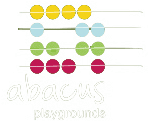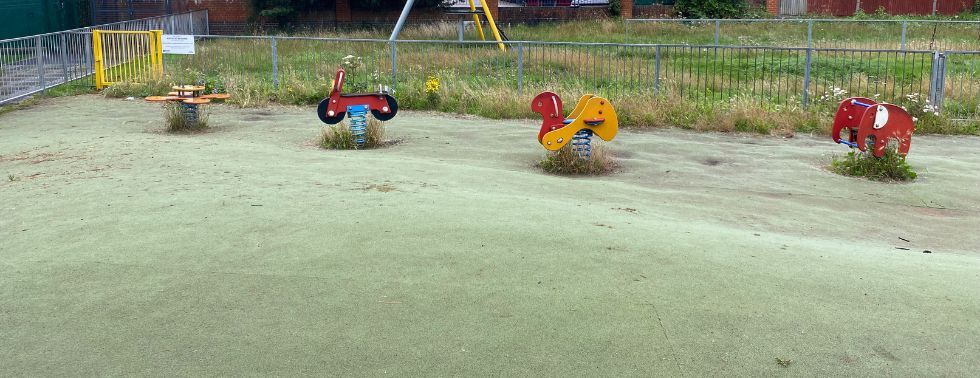Playground surfacing plays a vital role in keeping children safe, meeting compliance standards, and enhancing the overall look and function of an outdoor play space. But like any well-used surface, it doesn’t last forever. Whether you manage a school playground, public park, or leisure facility, knowing when to replace your playground surfacing is key to ensuring safety and long-term value.
Playground surfacing won’t last forever. Cracks, poor drainage, hard patches, or faded colours are key signs it’s time to replace your surface. Worn or unsafe areas risk injury and non-compliance. Abacus Playgrounds offers expert advice, inspections, and replacements to keep your space safe, durable, and welcoming for every child.
How do you know it’s time for an upgrade?
Here are the top signs to look out for.
- Visible Cracks, Splits, or Holes
Cracks in wetpour or splits in bonded mulch can expose the underlayer, increasing the risk of trips and falls. Over time, temperature changes, constant use, and weathering can cause surface materials to degrade. Small cracks can sometimes be patched, but widespread damage usually means a full resurfacing is the safer and more cost-effective option.
- Loss of Shock Absorption
One of the most important functions of safety surfacing is impact protection. If you notice that the surface feels hard underfoot, especially under and around play equipment, it may no longer meet critical fall height (CFH) standards. This puts children at risk of serious injury and could leave you exposed to liability issues. Regular testing can help identify this issue early.
- Discolouration and Fading
Faded surfacing may not pose an immediate safety risk, but it’s often a sign that the material is ageing and becoming brittle. UV exposure and constant foot traffic wear down surfacing over time, especially in vibrant areas like themed wetpour or artificial grass. Replacing tired, patchy surfacing can rejuvenate your whole play area—and make it more inviting to users.
- Pooling Water or Poor Drainage
If water is collecting on the surface after rain, that’s a red flag. Safety surfacing should be porous or allow for appropriate drainage. Standing water can cause slip hazards and long-term structural damage to the base layers, reducing surface lifespan. In some cases, replacing the surfacing with a more modern solution like SUDS Bond may be the best fix.
- Loose, Shifting, or Uneven Surfaces
A surface that moves underfoot, such as rubber mulch or artificial grass that has lifted or bubbled, can be both a safety hazard and a sign of subbase failure. These issues can’t be solved with minor repairs—replacement is often the only safe course of action.
- Wear and Tear in High-Traffic Zones
Entry points, beneath swings, and around climbing frames tend to wear first. If you’re seeing thin or bald patches, exposed underlay, or worn seams, it’s time to consider either partial resurfacing or a full replacement—especially if the area no longer meets BS EN 1177 safety standards.
- You’re Planning a Wider Playground Refurbishment
Replacing your surfacing is a smart move when upgrading or expanding your play equipment. Installing new surfacing alongside new equipment creates a cohesive finish and ensures that safety and compliance are addressed in one go. Abacus Playgrounds offers complete playground surfacing and refurbishment solutions tailored to your space and usage needs.
Plan ahead with Abacus Playgrounds
If you’ve noticed any of these warning signs, it’s worth booking a professional inspection. At Abacus Playgrounds, we offer free site assessments and expert guidance on whether you need repairs, partial resurfacing, or a full upgrade. With over 30 years of experience and a wide range of high-performance materials, we’ll help you make the best long-term decision for your playground.
Get Expert Advice Today
Contact us today to arrange a site visit and receive tailored advice from our surfacing specialists. Whether you’re working with wetpour, mulch, resin-bound gravel, or artificial grass, we’re here to help you keep your play areas safer, compliant, and looking their best.

